CLICK ON THE MAIN PHOTO ABOVE TO VIEW CAPTIONS IN GALLERY FORMAT
Image 1: After my exhausting trip to Faviken 3 years ago, I promised myself that I would never, and I mean never, again do a long haul one-day trip just for a meal. After all, I’ve eaten at many of the most prestigious chef’s tables including all the World's 50 Best restaurants, so I thought that there was nothing left to tempt me into such a journey. However, with an opportunity to eat at a place rumoured to have a waitlist until 2025, it was simply a once in a lifetime chance that I just couldn’t pass up! So…yes. Another rather tiring journey, consisting of a flight to New York City followed by a 3-hour ride north from Manhattan along the Hudson river.
Image 2: I finally arrived at the beautiful 12-acre grounds where Damon Baehrel has been established for over three decades. Damon utilises almost every edible natural element to create a unique and delicious menu - a Native Harvest cuisine! Away from the noisy traffic and Manhattan skyscrapers, and with a gentle breeze to cool us, the stress of our trip soon disappeared and we prepared to enjoy our lunch.
Image 3: Although Damon can serve up to 18 diners a day, we, a group of five travelling from three continents (Founder of FoodieHub, Andy Hayler, and FMF) had the place to ourselves on that weekday afternoon. We were determined to take our time – in fact, by the time we saw our driver again, it was 7 hours later - making this the longest meal in my dining career!
Image 4: Damon's does most of his work in the preparation kitchen, next to the parking area.
Image 5: The original restaurant name was the Basement Bistro for reasons which are probably obvious. Since Damon had never bothered with publicity, the only way you would hear about his place was by word-of-mouth. In fact, even in today’s highly-connected Internet age, there's not a whole lot you can find out about Damon unless you chance upon recent Bloomberg interview. Surely Damon could have never imagined that, more than a quarter of a century later, he’d be attracting people from every corner of the globe and have a waiting list of 10 years! The special way in which Damon treats his customers began at our very first step into his restaurant – it was the man himself who opened the door!
Image 6: There was no team of smiling staff, no posh décor, no gleaming silverware - not even any background music. He wasted no time in explaining that not only is he the chef, the waiter, and the dishwasher – but he’s also the cheesemaker, the forager, and the grower. Basically, Damon made of every single ingredient we’d eat today. After hanging up our coats and opening our bottle of Roederer Rosé 2009, one of 11 bottles we’d brought with us, he started expanding on the vision behind his cuisine.
Image 7: Gathered round this table, I listened to one of the most enlightening food talks in my life! Damon got everything he needed from his 12 acres, not only to survive, but to create an elaborate meal. To illustrate his point, he laid out on the table a dozen types of Sap, such as birch, maple, hickory, sycamore, cherry, walnut and butternut. Every one of them would somehow be used in our meal! Sap is a fundamental and very versatile ingredient of Damon’s cooking. Each one has a unique flavour that changes throughout the year, and is used for many purposes, from curing meat to pickling vegetables and curdling cheese.
Image 8: Another ingredient original to Damon is Flour, made from plants such as cattail, clover, beechnut, dandelion, pine and hickory. By soaking and drying thin sheets of pine bark, for example, flour can be ground and used for baking. Oils such as butternut oil, hickory oil and grapeseed oil can be produced by a pressing technique. Damon can also get Salt by filtering seawater, though many of his saps already lend a natural saltiness to his food. Flowers and seeds can be turned into powder and used as Spice.
Image 9: In Damon’s talk there was no shortage of facts to convince us that nature can deliver everything required for a sophisticated meal. The rutabaga root, for example, is a perfect emulsifier for making sauce; violet stems are a great substitute for starch, and stevia contains 100x normal sugar sweetness. And that’s not to mention the abundance of herbs, vegetables, wild mushrooms, and even edible lichen used in his cooking. For meat, Damon’s farm has chicken, turkey, cow, lamb, etc. so - by using preserving techniques that range from curing to smoking, he can offer wonderful flavours throughout the entire year.
Image 10: Look at this beautifully rustic setting! It seemed like visiting someone's home – which, come to think of it, is exactly what we were doing! Damon added a final point – that his menu carries a surprise element: the fish. This, he told us, is because fish is the only part of his cuisine he doesn’t make himself, so he relies on his one and only supplier to deliver whatever live seafood is available. When it arrives, it’s a surprise both to him and any guests who want a fish course.
Image 11: Actually, it’s not water in the glass, but filtered Sycamore sap. This is similar to water in some ways, but when the sap is concentrated, the flavour becomes very intense.
Now…onto the meal. And first, I should say that, though Damon was very kind in allowing me to take photos of every course, I promised not to reveal every detail. So I’ll describe only the first few courses full detail to illustrate Damon’s meticulous and creative approach to his Native Harvest cuisine. The rest of the meal will be in outline only.
Image 12:
Every course began with a short lecture – we could all sense Damon's passion for his art.
Image 13: Course 1 – Cured Bluefoot chicken and Cedar crisp Damon shaves the inner part of the cedar wood (which is what the crisp is sitting on) into thin sheets by hand. He then soaks these in water and cures them once every 4-6 weeks for about 18 months until the bitter flavour has gone, then dries and grinds the results into cedar flour. This flour, along with duck egg white, is mixed with oil (made by pressing hickory root) to make the crisp. On top was Bluefoot chicken, which has been cured in pine needle juice, pine powder and fresh pine pulp for a whole 16 months! This homemade food was jaw-droppingly surprising - the crisp was beautifully crunchy while the salami was an excellent blend of meat and fat. Great flavours too!
Image 14: Course 2 – Cured Scottish salmon and Burdock root chip Under the little round black burdock root chips was Scottish salmon, soaked in cold sycamore sap for 43 days. And I mean soaked – not smoked or cooked, just simply soaked. As the climate doesn't encourage the growth of lemon, Damon used green (unripened) strawberry as a sauce substitute, counterpointing the rich taste of the salmon with a nice bright acidity. The whole snack was dusted with a ‘spice’ made from the powdered petals of wild marsh-marigold. Just the concept alone was stunning. It was a course that truly showed the power of this particular sap (sycamore), which added a nice blend of salty sweetness to the fish. High quality food indeed!
Image 15: Course 3 – Oyster mushrooms and Pine crackers Our next bite was a cracker – a cracker that had been a year and a half in the making, because it’s a pine cracker. Similar to the way in which the cedar flour was made, this cracker uses 2014 pine flour - itself made from the pine wood that Damon got at the beginning of 2014. Every 3 years, the two butternut trees produce nuts, which are pressed to make butternut oil - and this, along with sea salt, also filtered by Damon, is used to make the cracker. Mushrooms are harvested by Damon from the 200 or so logs spread over the property. As Damon has said a few times already – nature has it all planned out for him. It would be unbelievable if we hadn’t actually experienced this meal ourselves!
Image 16: Course 4 – Wild carrot slush This was the first palate freshener to be served during the course of the meal. It was a sorbet, made from Queen Anne's lace (wild carrot), handpicked by Damon. He freezes it in an ice bath, while hand-stirring and adding stevia syrup for a touch of sweetness. The green powder was made from an onion-favoured lichen while the red powder was made from baby maple leaves, which had an interesting sweet and sour taste. Although a simple-looking dish, it turned out to be a highlight of my meal – I was surprised by the intensity of the beautifully-captured carrot flavour. Once again, I was reminded of how Damon was making full use of every edible element of the natural surroundings.
Image 17: BREAD with Aged butter Nothing is simple here! This bread was made from (handmade) cattail, clover, and dandelion flour, using wild malbec grape as yeast, and coated with a mix of wild onion, beechnut, flax and caraway, then topped with marjoram. The flatbreads on the side were made from acorn, goldenrod, and hickory nut flour, with grapeseed oil brushed on top and a touch of garlic powder and charcoaled onion. Complex!
Image 18: There were two different spreads to enhance the breads. In the green ramekin was freshly churned butter from the milk of Damon’s Icelandic lambs, dusted with wild spinach powder, while in the…
Image 19: …blue ramekin was cow butter. This had been aged for 3 months in Damon’s cheese room to enrich the flavour, then dusted with wild angelica powder. Damon told as that, when the cows produced the milk for the butter, three months ago, they were grazing in his wild flower field. That’s why the end-product, the butter, had such a nice golden colour.
Image 20: This bottle contained grapeseed oil, pressed a few days ago and infused with spruce shots, cedar berries and pine needle. It underlined once again just how much work had gone into each course of the meal. It was simply amazing! We were all agreed that, even if the meal were to finish now, the experience was already worth the trip. And while we were all agreeing on this point, expressing our appreciation of Damon’s expertise and effort, we were nibbling enthusiastically away at the warm bread and their spreads. It was certainly wonderful food so far!
Image 21:
Course 5 – Cheese and “Charcuterie” Wow! Look at these food miniatures! What masterpieces!
Image 22: Damon makes about 40 types of cheese and a range of pine needle-cured meats (they can't be formally called charcuterie because they’re not made with salt). We got to sample four of the cheeses and six of the meats, each paired with a condiment.
Image 23: The enzyme Damon uses for his cheesemaking comes from the green of carrot tops! Adding them to milk causes the curdling process to begin. In this picture, from the left: a 6-month old mild cow’s blue with wild partridge berries; 90% cow / 10% sheep cheese with crusted cantaloupe seeds and 2013 pickled peach; a small 3-week old cheeseball of goat and sheep milk, curdled with stinging nettle and paired with tomato raisin and pickled wild mulberry; 4-month old cow and sheep cheese, curdled using cauliflower juice and drizzled with Japanese knotweed. Every cheese was excellent, and all the more tasty for being imaginatively paired with a fruity element. To say that they were amazing is putting it mildly!
Image 24: Damon’s meats were all cured using (mainly) pine needle juice, pine needle powder and spruce juice. From the left: the youngest of the meats – 13-month guinea hen, seasoned with spicy red pepper powder; a pepperoni-like meat which was actually Chinese brown goose, seasoned with black Krim tomato powder; 18-month cured duck salami; 2-year cured venison; 28-month cured Berkshire pork; 19-month cured Icelandic lamb! We were struck speechless by the fact that all these can be produced by a single person. Each was delectable with its own unique and powerful flavour. Astonishing!
Image 25: Now…I’m afraid I have to stick to my word of honour and not reveal further detail from this point on. But no doubt you can guess the complexity of every course in the rest of the meal.
Course 6 – “Under the leaves” Daylily tubers / wild honey mushrooms / hickory oil / wild fennel powder / milkweed pods and birch sap sauce / burnt corn sauce / daylily shot powder
Image 26:
Course 7 – Heritage turkey brined in beech wood sap / cattail sauce / willow tree crunch / hickory bark pepper
Image 27:
Course 8 – Clover flower slush / stevia syrup / sour moss dust / clover leaf / stevia bud / violet leaf
Image 28:
Course 9 – Nova Scotia clam / wild ostrich fern paste / hemlock oil / spiny thistle stems crunch
Image 29:
Course 10 - Nova Scotia rock crab cooked in acorn butter oil / wild lovage juice / toasted charred acorns / wild burberry root / wild chicory & dandelion root / cured dried crispy monkfish liver
Image 30:
Course 11 - Nova Scotia lobster cooked in grapeseed oil / lemon verbena / wild sweet goldenrod sauce / cured yellow fin tuna salami / baked birch leaf ashes
Image 31:
Course 12 – Newfoundland prawns cooked in cherry sap / lemon cucumber seed / spicy cured swordfish ham
Image 32:
Course 13 – Sumac slush / June berry powder / beech bud
Image 33:
Course 14 – Cured and Cooked pork
Brined shoulder, neck and shank in pine juice, powdered and pulped for 19 days, then slow-cooked for 9 hours in hickory sap. Kachoba squash jerky / bull thistle sauce / Queen Anne’s lace powder
Image 34:
Course 15 – Goat: Sausage and Leg
On top was meat from the leg, cooked on hot stone. Vintage potato / Adirondack blue potato sauce / fingerling sweet potatoes
Image 35:
Course 16 – Sumac Teal duck brined in sumac powder for 12 days then cooked in beech wood sap for 7 hours. Kohlrabi / wild bergamot flowers saffron / wild brassica roots sauce / wild sunflower crisp
Image 36:
Course 17 – Augus beef
A lean eye-round cut aged for 80 days. Woodear mushroom paste / fermented red cabbage sauce / stinging wood nettles / wild turnips
Image 37:
Course 18 - Acorn flour cone
Damon created the acorn flour cone in 1986, and has served it in the restaurant, in one form or another, every night since 1989. This version has wild nightshade beans, green eggplant powder and 2015 vintage hickory nuts.
Image 38:
Course 19 – “crème brûlée” and wild elderberry slush
Made with duck egg, stevia syrup and giant blue Hubbard squash "seed milk". Crystallised walnut sap to mimic crème brûlée with wild cranberry drizzle.
Image 39:
Wild elderberry slush / unripe grape syrup / lemon leaves / toasted salted pumpkin seeds / wild sarvisberry powder
Image 40:
Course 20 – “Chocolate”
We all thought this was chocolate until Damon revealed that it was actually “acorn butter” / “hickory butter” / stevia syrup / dried goldcot / dried apricot / pine nut / wild red stem apple mint. This must be a dream dessert of anyone who has allegy to chocolate!
Image 41:
Course 21 – Cheese
What a finish! Three plates of cheese and fruits, showcasing yet another 12 types of cheese that Damon has created.
Image 42:
For each cheese, Damon described in detail the type of milk used, what was used as a curdling agent, and the age of each cheese!
Image 43:
Course 22 – Grape Slush Wild malbec grapes / maple seeds cluster / maple sap / wild lemon balm
Image 44: What a meal! A glance at the clock told me that it was an amazing 7 hours since we stepped into Damon's house. And yet the time simply flew by! When Damon brought the bill, he gave us his bread to take away. Great idea!
Image 45: He even invited us to take some plants home as a souvenir of our experience. Unfortunately, we each had a flight to catch and carrying plants was perhaps not the best plan. Still, we all appreciated the generous gesture.
Image 46: Just as he had let us in, Damon personally let us out, and stayed with us until we drove away. What an experience! It wasn’t merely Damon’s stories that made it unique, but the sheer quality and creativity of the meal, from the intensity of the wild carrot sorbet to his conceptual "chocolate". As the restaurant vanished into the distance behind me, I found myself wondering what made this meal so special – after all, Damon isn’t the only one to base a restaurant on the idea of sourcing all ingredients from the surroundings. There’s the Sportsman in England, for example, and Blue Hill at Stone Barns, Faviken in Sweden, and - of course – there’s Chef Magnus, serving his 12-course menu on the isolated island of Oaxen for 17 years.
Image 47: What makes Damon different is that he’s a true pioneer who thought of the idea a full 30 years ago. To put this in context, René Redzepi of Noma – famous as the initiator of the forage movement - was still in elementary school when Damon began to forage! What’s more, he's able to do all these by himself - from farming, to cooking and serving, even to the level of making flour and pressing oil. This is almost unbelievable (makes you wonder why some small fine dining restaurants need massive army of 30+ staff)! In short, Damon has dedicated his life to his Native Harvest cuisine. Food alone was about a Michelin 2-star standard, but the overall experience has to be one of my most memorable of all time!


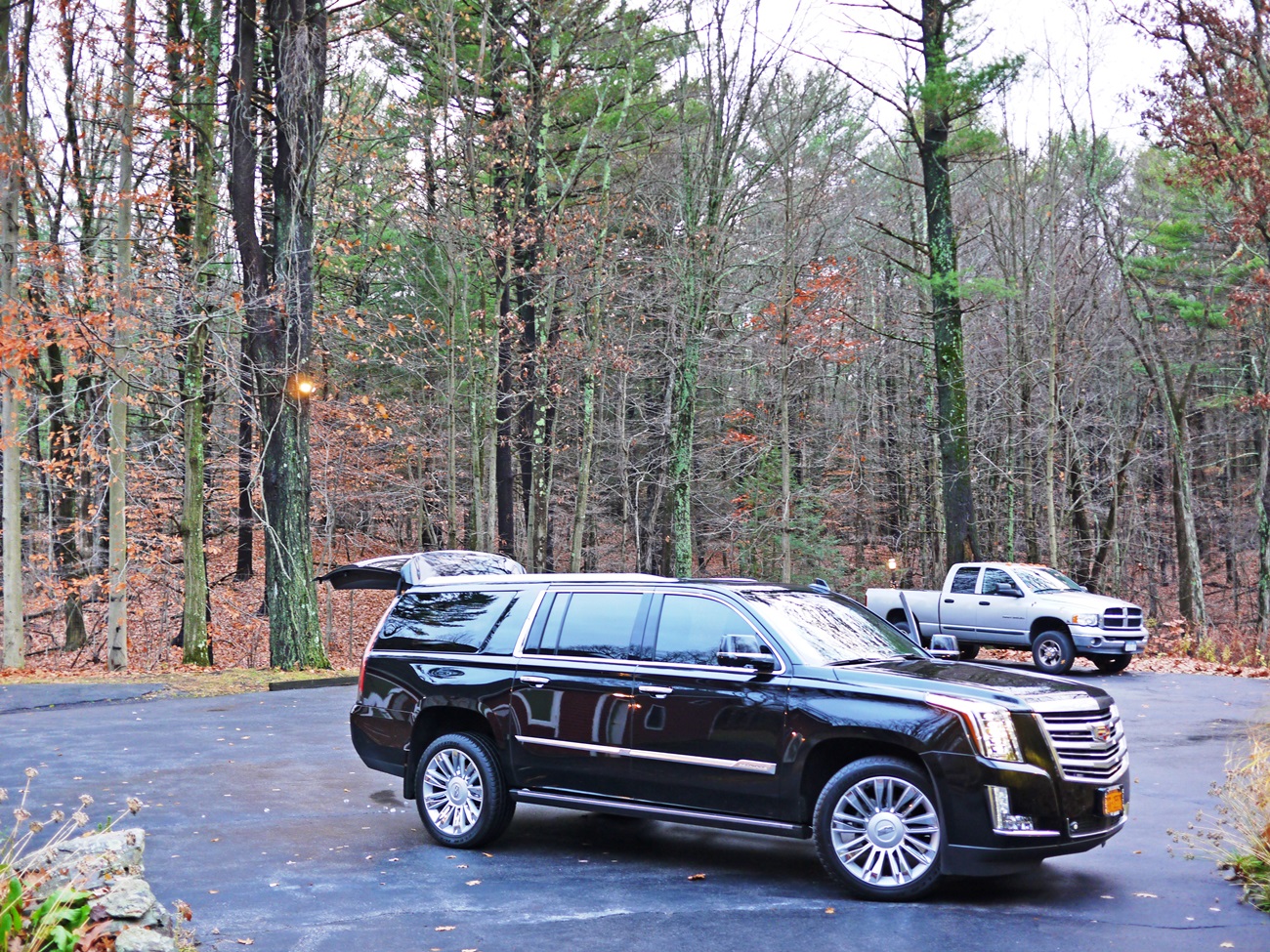







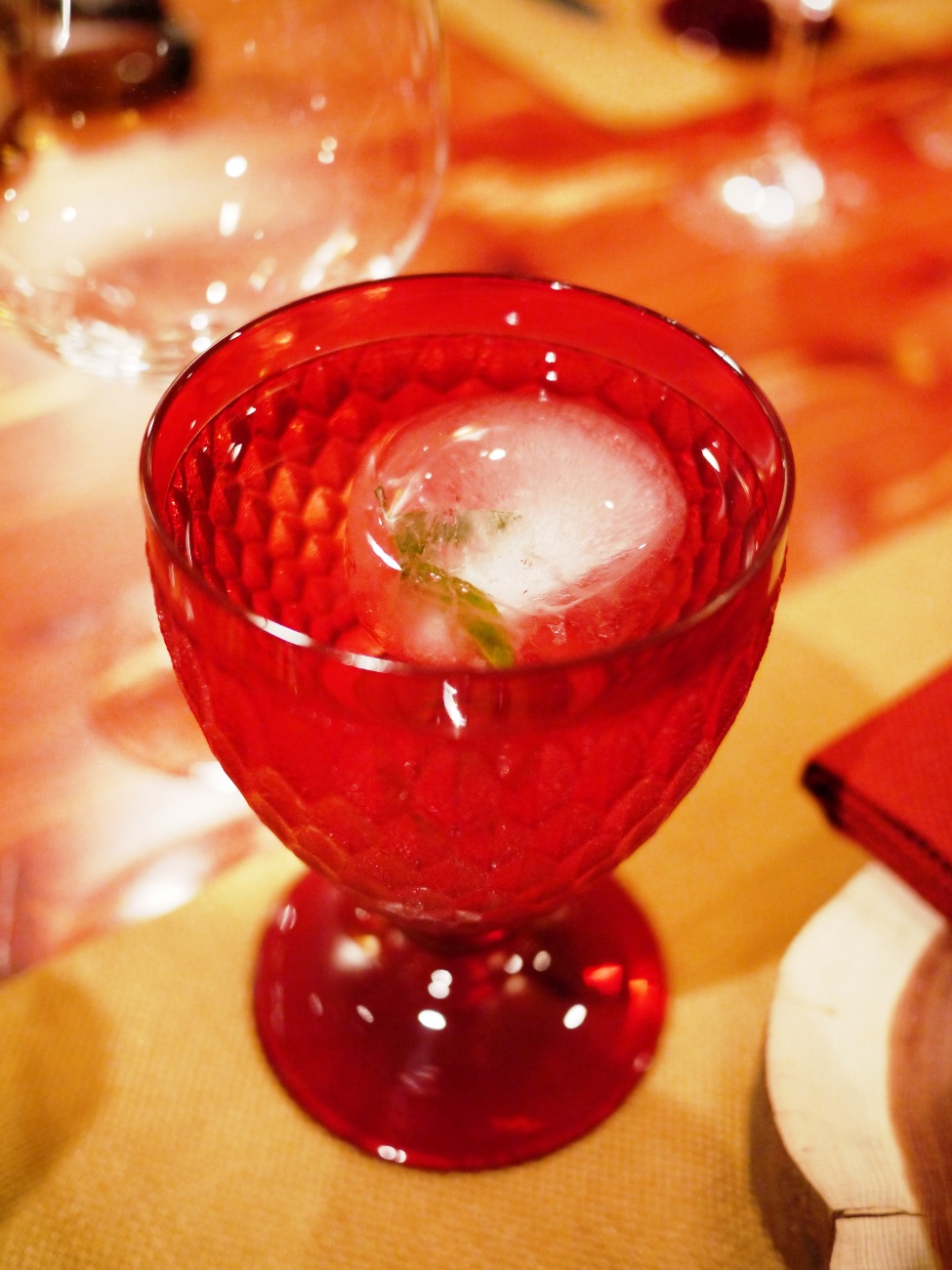
























































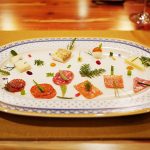













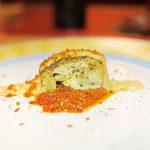






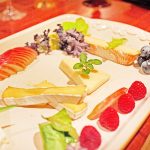





Tom Miller (Gainesville, Florida (The Known Center of the Universe)
I’m happy to report, we were blown away – naysayers be damned. I’ve been to some of the best restaurants in the world. This was far and away the best and most unique experience imaginable. Here’s an excerpt from the email I wrote to Chef Baehrel in response to the experience:
” On behalf of my companions who traveled from Gainesville, Florida all the way to Earlton, NY for the express purpose of eating and experiencing Native Harvest, I must extend our profound gratitude for an experience none of us shall ever forget.
Chef Damon Baehrel’s hospitality, warmth, and good spirits during the seven-plus hours filled us from top to bottom with bliss and joy. The time seemed to fly by, just as others have said. The food was spectacular, original, mind-boggling, the conversation lively and fascinating, and we all felt like we’ve met two new friends; Chef Baehrel, and now returning home, our own yards and all the secrets we’ve never explored there.
We learned so much, had far too much fun. If the price was three times higher, it still would have been a considerable reward.
Time is precious, valuable, and a gift. This experience has reminded us of that truth.
We felt so welcomed. It was the greatest birthday imaginable with very special friends.
All the best,
— Tom Miller”
FDE
Tom, thanks for your compliment! Yes, the experience with Chef Damon was very unique indeed. We walked around the whole area, checked out various rooms, ya, after a few hours, we questioned ourselves where the rest of the world has gone! He setup everything himself, and even cleaning the table and washing dishes after, and all the cooking, plating, and serving us. I don’t know, there is no sign of any other life around haha. it’s a strange experience. I mean, the food quality was top notch, it’s not like we had an amateur meal at all. Ya, magical. Oh, yes, initially he prefers no photo, then we said it will be for personal memories not for publication. Then I requested just to publish a few and not the whole meal. He finally approved the above. I can’t wait to hear your experience.
Tom Miller (Gainesville, Florida - the Known Center of the Universe)
Thank you for posting this. Having eaten at Magnus’ Faviken – a pipe dream of mine even though he’s closed it up to progress forward – you would certainly know if Chef Damon was the real deal. I don’t know how you were able to capture his dishes, I assume with cooperation from Chef Baerhel, but your photos are the best there are. Your description of the experience is also the best of the bunch. So kudos for your passion for art, experience, food, travel, and the rest. I have a rare opportunity to dine at Damon’s in just a couple weeks. I’ve read the speculators, the naysayers, but there’s magic to a mystery and no doubt that if your experience is one of profundity, it is authentic and life-affirming, and magical. Thank you for your sharing of the experience, and until one experiences – talk is just talk. Your talk is of experience and gratitude seems a part of what you do and who you are. My gratitude to you. – Tom Miller
FDE
Alan, haha. Yes, it’s simply shocking that the whole experience can be created by one man!
Alan Spedding (Cumbria , UK)
OMG….Chef is a genious , what a master craftsman. I don’t think I’ve ever seen so much expertise when it comes to cooking from the land.
Only one thing surprised me….Hemlock oil ….you still alive Kev ?……..Kev ?